Categories: Featured Articles » Novice electricians
Number of views: 17667
Comments on the article: 0
Why modern inverters use transistors, not thyristors
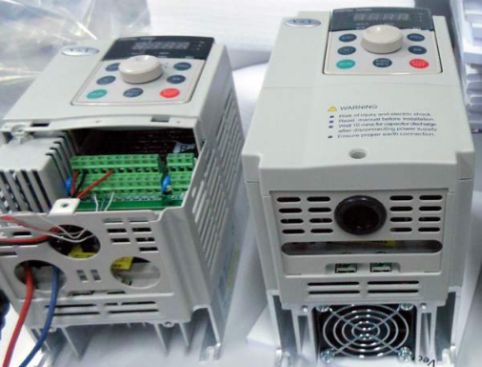
Thyristors belong to semiconductor devices of the p-n-p-n structure, and, in fact, belong to a special class bipolar transistors, four-layer, three (or more) transitional devices with alternating conductivity.
The thyristor device allows it to work like a diode, that is, to pass current in only one direction.
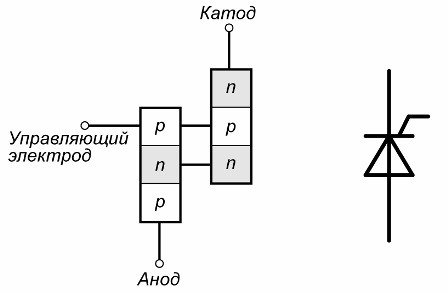
And also like a field effect transistor, thyristor there is a control electrode. Moreover, as a diode, the thyristor has a peculiarity - without injection of minority working charge carriers through the control electrode it will not go into a conducting state, that is, it will not open.
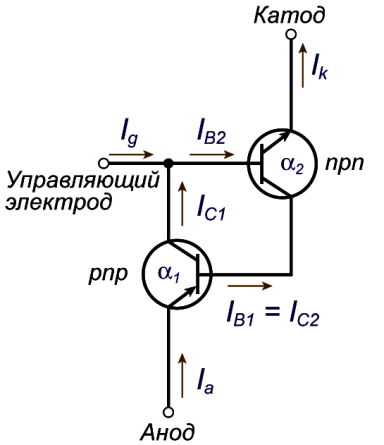
A simplified thyristor model allows us to understand that the control electrode here is similar to the base of a bipolar transistor, however, there is a limitation that it is possible to unlock the thyristor using this base, but it cannot be locked.
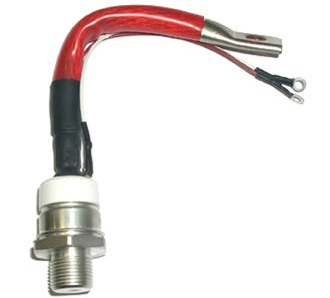
A thyristor, like a powerful field-effect transistor, can of course switch significant currents. And unlike field-effect transistors, thyristor-switched powers can be measured in megawatts at high operating voltages. But thyristors have one serious drawback - a significant turn-off time.
In order to lock the thyristor, it is necessary to interrupt or significantly reduce its direct current for a sufficiently long time, during which nonequilibrium main working charge carriers, electron-hole pairs, would have time to recombine or resolve. Until the current is interrupted, the thyristor will remain in a conducting state, that is, it will continue to behave as diode.
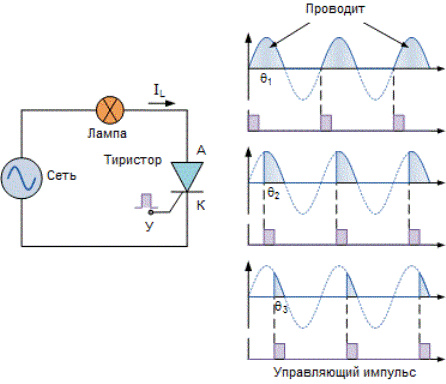
AC sinusoidal current switching circuits provide thyristors with a suitable operating mode - a sinusoidal voltage biases the transition in the opposite direction, and the thyristor automatically locks. But to maintain the operation of the device, it is necessary to apply an unlocking control pulse to the control electrode in each half-cycle.
In circuits with DC power, they resort to additional auxiliary circuits, the function of which is to forcibly reduce the anode current of the thyristor, and return it to the locked state. And since charge carriers recombine when locked, the thyristor switching speed is much lower than that of a powerful field-effect transistor.
If we compare the time of complete closure of the thyristor with the time of complete closure of the field effect transistor, the difference reaches thousands of times: a field effect transistor needs several nanoseconds (10-100 ns) to close, and the thyristor requires several microseconds (10-100 μs). Feel the difference.
Of course, there are areas of application of thyristors where field-effect transistors do not withstand competition with them. For thyristors, there are practically no restrictions on the maximum permissible switched power - this is their advantage.
Thyristors control megawatts of power in large power plants, in industrial welding machines they switch currents of hundreds of amperes, and they also traditionally control megawatt induction furnaces in steel mills. Here, field effect transistors are not applicable in any way. In pulsed converters of medium power, field-effect transistors win.
A long shutdown of the thyristor, as mentioned above, is explained by the fact that when turned on, it requires to remove the collector voltage, and like a bipolar transistor, the thyristor takes a finite time to recombine or remove minority carriers.
The problems that cause thyristors in connection with this peculiarity are associated primarily with the inability to switch at high speeds, as field-effect transistors can do.And even before the collector voltage is applied to the thyristor, the thyristor must be closed, otherwise switching power losses are inevitable, the semiconductor will overheat.
In other words, the limiting dU / dt limits performance. A plot of power dissipation as a function of current and on-time illustrates this problem. The high temperature inside the thyristor crystal can not only cause a false alarm, but also interfere with switching.
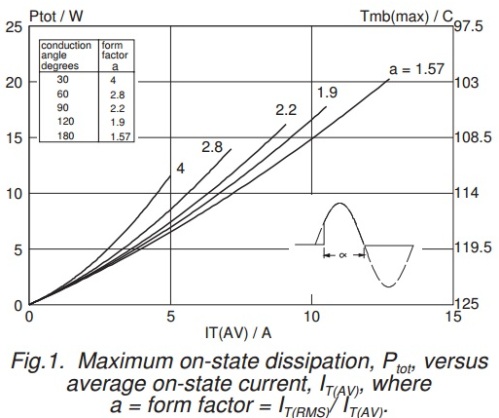
In resonant inverters on thyristors, the locking problem is solved by itself, where the surge of reverse polarity leads to locking the thyristor, provided that the exposure is quite long.
This reveals the main advantage of field-effect transistors over thyristors. Field effect transistors are capable of operating at frequencies of hundreds of kilohertz, and control today is not a problem.
Thyristors will work reliably at frequencies up to 40 kilohertz, closer to 20 kilohertz. This means that if thyristors were used in modern inverters, then devices with a sufficiently high power, say, 5 kilowatts, would be very cumbersome.
In this sense, field-effect transistors make inverters more compact due to the smaller size and weight of the cores of power transformers and chokes.
The higher the frequency, the smaller the size required transformers and chokes to convert the same power, it is known to everyone who is familiar with the circuitry of modern pulse converters.
Of course, in some applications, thyristors are very useful, for example dimmers to adjust the brightness of the lightoperating at a network frequency of 50 Hz, in any case, it is more profitable to manufacture on thyristors, they are cheaper than if field-effect transistors were used there.
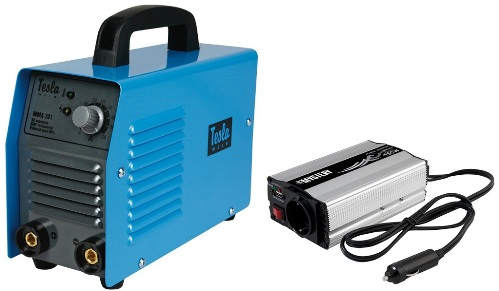
And in welding invertersfor example, it is more profitable to use field-effect transistors, precisely because of the ease of switching control and the high speed of this switching. By the way, when switching from a thyristor to a transistor circuit, despite the high cost of the latter, unnecessary expensive components are excluded from the devices.
See also at e.imadeself.com
:
